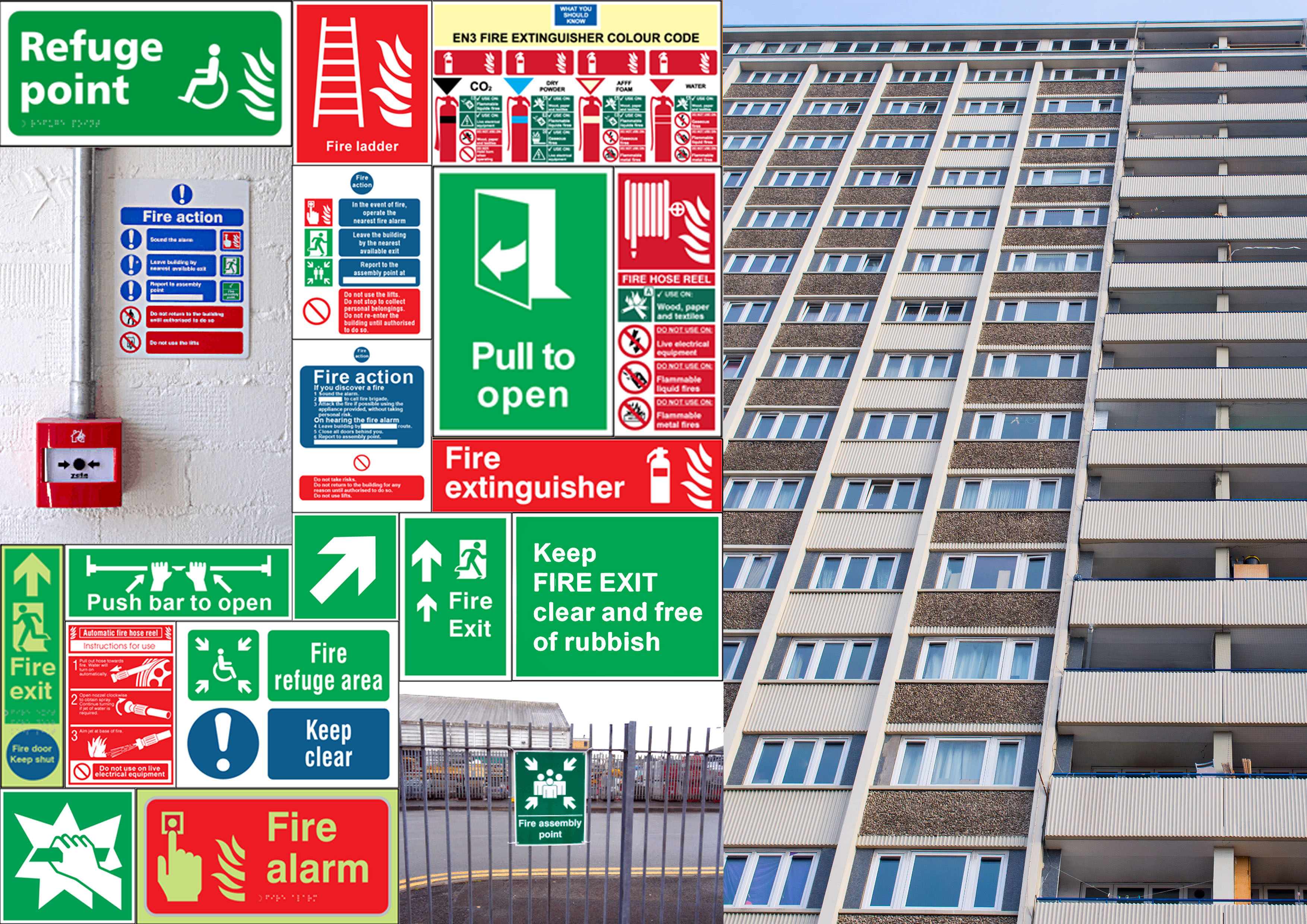
The UK’s fire safety regulations have received criticism over recent years. The Grenfell Tower incident in 2017 highlighted massive issues with tower block safety, namely fire safety standards.
It also highlighted huge issues in wealth disparity and living standards, as well as the need for good fire safety protocols when constructing and maintaining a tower block building.
As more information is revealed, it is becoming increasingly clear that tower block safety isn’t where it needs to be in the UK. Why has this happened, and how can we fix it?
People have started to ask questions. Has fire safety in purpose-built blocks of flats improved? How does the Fire Safety Act 2021 change things? Is the property industry doing enough?
We answer these questions while highlighting the need for fire safety signs, risk assessments and protocols below.
Fire Regulations For Tower Blocks
There are six steps to maintaining fire regulations for purpose-built tower blocks. In total, all blocks should:
- Conduct a fire risk assessment.
- Communicate policies to residents.
- Ensure rooms and corridors are properly compartmentalised. This is part of fire regulations for communal hallways, which governs space and escape routes.
- Have clear fire escape routes.
- Fit up-to-date fire doors.
- Install and maintain smoke alarms.
All tower blocks must follow the Fire Safety Act 2021.
The Fire Safety Act 2021
The Fire Safety Act 2021 changes a few key areas of fire safety. In response to the Grenfell Tower fire, the law was introduced to Parliament in March 2020 before being made law on April 29th, 2021. The Act will come into effect at the end of 2021.
The Act changes three areas of the Regulatory Reform (Fire Safety) Order 2005:
- Increased ramifications for those designated as “Responsible Persons” in the case of a fire.
- Increases fire safety responsibilities to external areas, namely cladding.
- Increases fire responsibility to doors, external walls and common areas.
The change to “Responsible Persons” means they have to do more to ensure the fire safety of a building. The addition of checking external areas and common areas is a direct response to the Grenfell fire.
Now, residential fire safety needs to rely on good risk assessments, logical signposting and efficient procedures more heavily.
How Has Residential Fire Safety Changed?
Following the inquest into Grenfell and the passing of the Fire Safety Act 2021, the UK Government has claimed it will strengthen all residential buildings in the UK.
As mentioned above, there have been numerous changes to the Regulatory Reform (Fire Safety) Order 2005. However, these changes have been a long time coming. Much of the legal proceedings surrounding Grenfell took an age to process, and COVID-19 hasn’t helped things.
Overall, while residential fire safety hasn’t changed until this year on a policy level, at least people are now more aware of it and the dangers poor safety can cause.
Be sure to revisit the below blogs to brush up on your knowledge before the Fire Safety Act 2021 comes into play at the end of the year:
Keep Residents and Employees Safe With Fire Safety Signs
Keeping residents and employees safe begins with signs, labels and risk assessments. Thankfully, Label Source has you covered for most of this.
Our selection of fire safety signs are durable, eye-catching and are built to last, giving you a reliable set of labels to last for the long term.
For everything else, be sure to follow our Twitter for the latest safety news.